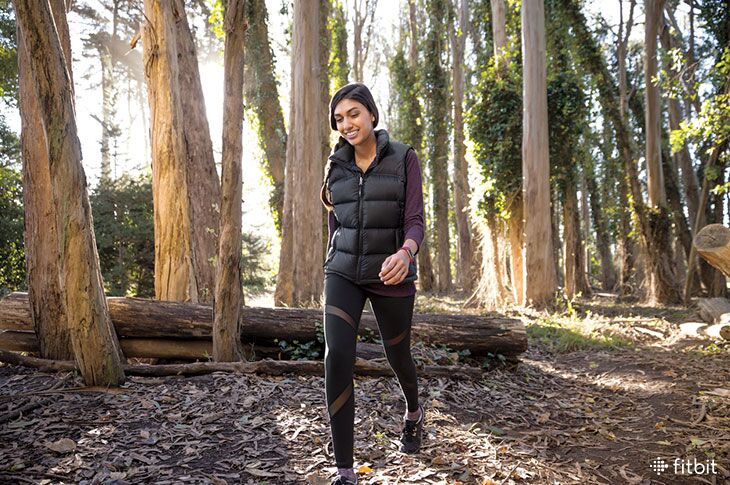
There’s something about hiking in the great outdoors: The beautiful scenery and fresh air can almost make you forget you’re exercising! But all it takes is one little blister or sprained ankle to ruin an otherwise lovely day (especially if it happens miles from civilization). The secret to staying pain free on your next trek? Preparation. Here’s what to do.
1. Find the right footwear.
“It doesn’t matter how beautiful the park is if your feet are giving you trouble,” says Wesley Trimble, communications manager for the American Hiking Society. Seeking out properly-sized footwear is key. “Shoes that are too small will cause a lot of pain, so when in doubt, go a little bit bigger.” His advice: Head to an outdoor retailer and talk to a salesperson about the kind of hiking you’ll be doing. An expert can recommend the right pair for you and ensure they fit correctly. As a general rule of thumb, hiking boots should fit snug (not tight), and allow for enough room to wiggle your toes.
Another tip: Schedule your footwear fitting later in the day. “Your feet swell throughout the day, so try on the shoes in the afternoon when your feet are as big as they’re going to get,” says Trimble.
2. Break your shoes in.
Never make that 10-mile trek in shoes you’ve just taken out of the box. Break them in first by wearing them around your house or neighborhood.“Blisters happen all the time—even to pros—but they’re preventable,” says Jeff Alt, a hiking and camping expert and author of A Walk for Sunshine. Breaking in your boots will loosen them up and let you see if there’s any unusual rubbing that might ultimately create a blister.
3. Pick your socks carefully.
You probably know better than to slip bare feet into boots, but when it comes to socks, material matters. “Your socks should be made of a moisture-wicking material, like a synthetic fabric or wool,” says Alt. “You also want a sock with some cushioning and that stays in place—it should rise above the height of your boot and shouldn’t slide down.”
4. Pack a few essentials.
Plan for the best, but prepare for the worst. Even when you’ve done all you can to prevent blisters, the occasional sore might arise. That’s why it’s important to head out with a gameplan. “As soon as you notice the friction, you should stop and deal with it—don’t assume you can wait until your next scheduled rest,” says Trimble. “Always have moleskin or some other type of blister treatment in your pack and put it over the hot spot (normal bandages won’t stay in place on a sweaty foot).”
Another good piece of equipment is trekking poles. In addition to providing stability for hiking over uneven terrain, they can help reduce pressure on your joints—especially when you’re going down steep hills.
5. Have a hiking-specific pack.
“Don’t use a typical school-style backpack,” says Alt. Opt for a bag with a hip strap. “When you try it on, the belt should fit snugly above your hip bones to allow most of your weight to be carried by your hips, not your shoulders.”
6. Train your body.
If you’ve never walked 10 miles before, don’t jump into a 10-mile hike. “Building up to that kind of distance will alleviate many potential injuries and pain,” says Alt. Simulate your surrounding as much as possible before lacing up. “If there’s a high school stadium nearby, walk up and down the bleachers to simulate going up and down a mountain. The more you build up a muscle group, the less likely it will get injured.”
7. Use correct technique (especially downhill).
The pull of gravity makes downhill paths particularly challenging. “Your body wants to go faster, which can lead to falls,” says Alt. “You want to slow yourself down, which can strain knees.” Gain control of your speed by taking smaller steps and heading down the trail in a zigzag pattern.
This information is for educational purposes only and is not intended as a substitute for medical diagnosis or treatment. You should not use this information to diagnose or treat a health problem or condition. Always check with your doctor before changing your diet, altering your sleep habits, taking supplements, or starting a new fitness routine.

I would recommend trekking poles. As an avid hiker and fitbit user I find the poles indispensable. Especially going downhill. It’s like having built in hand rails.